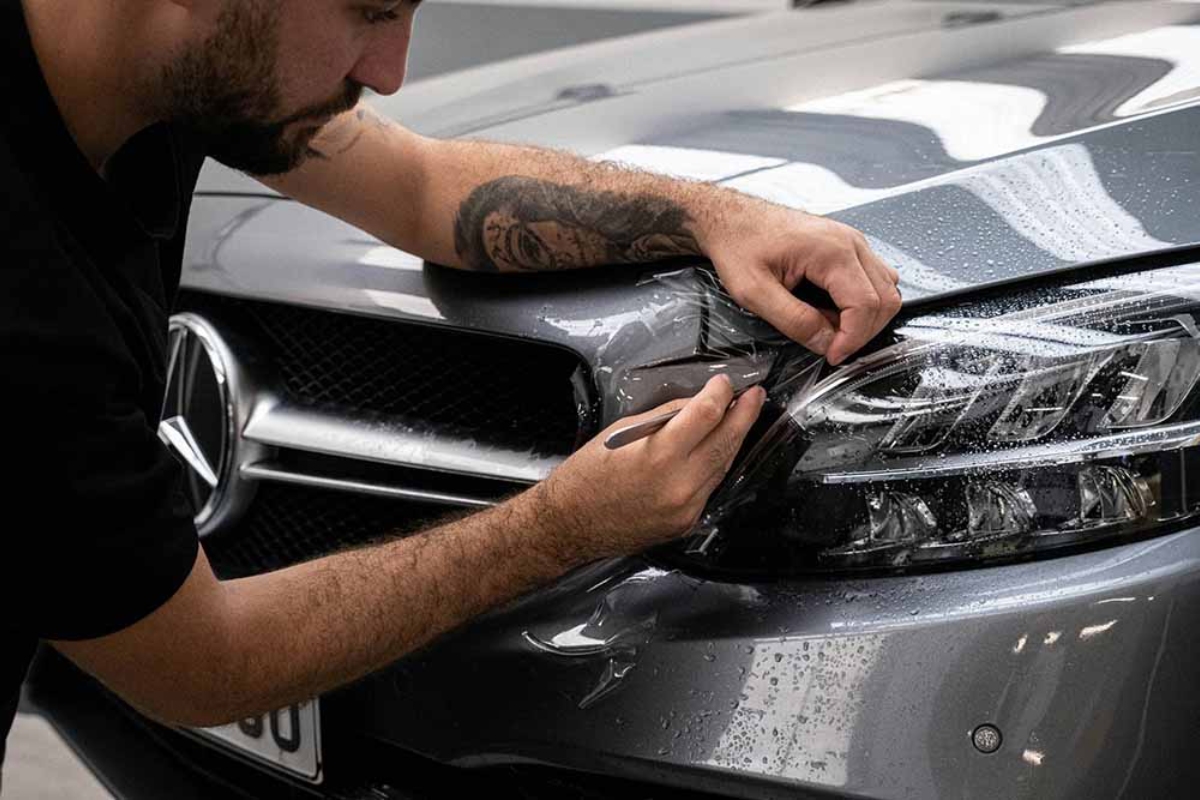Car wrapping is one of the most exciting ways to personalize a vehicle—but it’s also one of the easiest to mess up if you don’t know what you’re doing. From bubbling and peeling to color fading and surface damage, the wrong approach can ruin both your wrap and your car’s finish.
Here are five of the most common wrapping mistakes we’ve seen (and how to avoid them when working with TPU films).
Poor Surface Preparation
The biggest reason wraps fail? A dirty surface.
Even the smallest traces of wax, oil, or dust can prevent the adhesive from bonding properly. The result is bubbling, peeling, or premature lifting—especially around edges and curves.
How to fix it:
- Use isopropyl alcohol (IPA) to thoroughly clean the surface.
- Pay extra attention to crevices, door handles, and trims.
- Never install over wax or ceramic coatings.
- Dry completely before applying the film.
Overstretching the Film
TPU is highly stretchable—but it’s not indestructible. Excessive tension can distort color, thin out the film, or weaken the adhesive layer. Once overstretched, the material won’t “shrink back” evenly, leading to uneven finishes or visible distortions.
Best practice:
- Stretch gradually and evenly.
- Use controlled heat (no more than 200°F / 93°C).
- Avoid pulling too hard in one direction.
- For deep recesses, use smaller pre-cut sections instead of one large sheet.
Trapped Air and Bubbles
Everyone hates bubbles. They not only look unprofessional but also allow moisture and dust to get under the wrap, shortening its life span.
Prevention tips:
- Use a clean squeegee with felt edges.
- Start from the center and work outward in slow, overlapping strokes.
- For stubborn bubbles, use a small pin to release air and gently smooth it out.
- Keep your environment clean and dust-free during installation.
Ignoring Post-Heating
Post-heating is a crucial final step that many installers skip—especially DIY users. Without it, the film edges don’t properly seal, and over time, they’ll lift or peel.
How to do it right:
- After installation, heat all edges and corners to 190–200°F (88–93°C).
- Use an infrared thermometer to ensure consistent temperature.
- This process activates the adhesive, improving long-term adhesion.
Using Harsh Cleaning Methods
Even the most durable TPU wrap needs proper care. Aggressive cleaning, strong chemicals, or high-pressure washes too close to the surface can cause damage.
Smart maintenance tips:
- Hand wash with mild soap and soft microfiber cloths.
- Avoid automatic brushes or harsh degreasers.
- Don’t apply wax or ceramic coating not designed for wraps.
- Park in shade when possible to protect against UV aging.
Why TPU Films Are More Forgiving
One advantage of TPU wraps is that they’re self-healing and more resistant to minor mistakes. Small scratches or stretch marks can often be fixed with gentle heat. TPU also offers stronger adhesion and less shrinkage than vinyl, making installation smoother overall.
However, no film can save a bad prep job—so taking time to prepare and apply correctly is key.
Pro Tip for Installers
If you’re a professional or shop owner, consider educating your customers about care routines. A simple handout on cleaning, washing, and maintenance can reduce callbacks and improve satisfaction.
Wrapping It Up
Avoiding these five mistakes can mean the difference between a failed wrap and a flawless one. With TPU films, you already have an advantage: better stretch, better durability, and fewer long-term issues. Combine that with proper prep, heating, and care, and your work will speak for itself.
At tpucarwraps.com, we help professionals and DIY users get the best results possible.
Explore our premium TPU films, get expert advice, and see how easy it is to make your next project a success.


